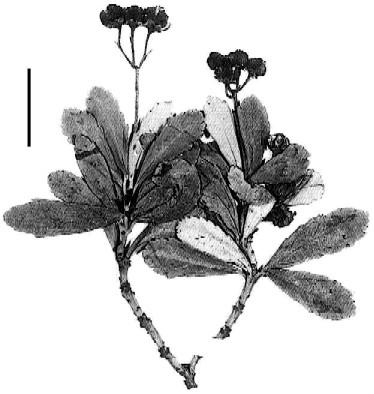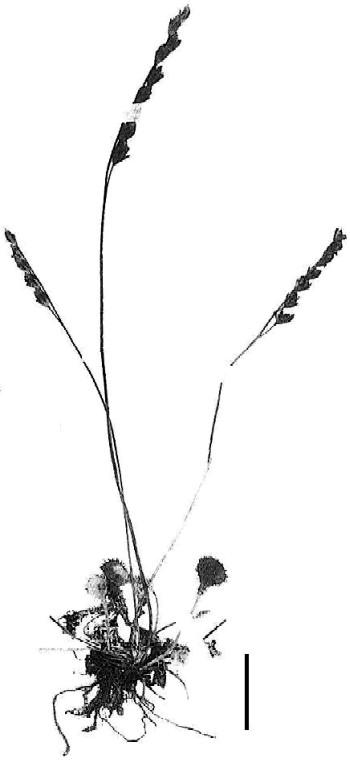(Upload on September 20 2022) [ 日本語 | English ]
Mount Usu / Sarobetsu post-mined peatland
From left: Crater basin in 1986 and 2006. Cottongrass / Daylily
[scientific name, synonym, books , specimen, plant morphology, plant anatomy]
|
When I was a high school student, I wanted to be a plant taxonomist. But now ... That is why this page is made.
(Mayr et al. 1953) The developmental stages of taxonomy1. α-taxonomy (analytical, flora)≈ descriptive taxonomy, typological taxonomy, and faunistic or floristic taxonomy 2. β-taxonomy (classificated)≈ phylogenetic taxonomy, phylogeny, systematics 3. γ-taxonomy (biosystematic)≈ iosystematics, evolution History of taxonomy (分類学史)Prior to LinnaeusAristoteles BC384-BC322, "Historia Animalium (動物誌)"Enaima (有血類) ≈ vertebrates and Anaima (無血類) ≈ invertebrates Theophrastes BC372-BC288 or BC370-285
"Historia Plantarum (植物誌)", "De cauris plantarum (植物の起源)"
plant = tree + shrub + under-shrub or semi-shrub + herb mints, legumes, umbels, etc. → classified based on human use e.g., flavor/smell, medicine, food, bean = artificial taxonomy → roughly consistent with family (科) in the modern taxonomy Dioscorides Ca. 50: artificial taxonomyThe Dark Age the effects of the Christian faith = deny evolution and speciation → mainly progress of (artificial) morphological taxonomy Albert Magnus 1193?-1280, Germany, "De vegetabilibus (植物について)" plant = 1) leafy plant (a. monocotyledon, b. dicotyledon), 2) leafless plant (= cryptogam) 1400-1700: The ages of medicinal herbsfashion of folk remedy or therapy Brunfels O 1464-1534Bock H 1498-1554 Fuchs L 1501-1566 Caesalpinus A 1519-1603: 1583 "De plantis libri" Bauhin G 1560-1624 Jung J 1587-1657 |
Pitton de Tourefort J 1656-1708: "Methodus plantarum nova (1682)"
Plants: described approximately 18,000 species
A: Imperfectae (flowerless)
a: Dicotyledons II Arbores (trees)
A: Monocotyledons From Linnaeus to DarwinCarl von Linnaeus (Linné) 1707-1778, Sweden, natural historyBufforn (1707-1788) Taxonomy + Morphology + Ecological technique, habit and competition Darwin E 1731-1802, Engl. (the grandfather of Darwin C)"Zoonomia" Humboldt, Alexander von 1769.9.14 -1859.5.6 (Gr): Naturalist
"Essai sur la geographie des plantes (1805)" considering hierarchical evolution - related to taxonomical order 1789 de Jussieu, Antoine Laurent: de Jussieu system1813 de Candolle, Anguste Pyramus: de Candolle system 1838 Endlicher, Stephan Ladislaus: Endlicher system 1843 Brongniart, Adolphe-Théodore: Brongniart system → the classification keys are different among these, because of criteria are different von Baer 1792-1876 Haeckel Ernst Heinrich 1834-1919: phylogenetic taxonomy - dendrogram fundamental law of biogenesis or recapitulation theory 1879-1962 → classical syllabi of plant taxa1892 Engler's syllabus |
|
Syngameon: syngameon and biological species are distinguished by the differences in the innter structures
Ex. Pinus, Quercus, Geum, Iris → the West Coast of USA: syngameon is more common than biological species (Grant 1981) Relationships between biological and taxonomical speciesTable. Biological species vs taxonomic species
Biological Sibling Semi- Micro- → evolutionary
species species species species
Taxonomic × × → no time scale
species
|
Sibling species (同形異種): regarded as sibling species complex on taxonomy
Ex. Drosphila pseudoobscura, D. persimilis |
|
Taxonomic rank (分類階級)Domain (ドメイン): = formerly empire or superkingdom
Ex. Phylum (phyla (pl.) 門): nucleus, chlorophyll, mode of body plan, etc = formerly division (prior to 1993) → five kingdoms proposed by Whittaker (ホイッタカー) Class (網): there is no exact agreement on the criteria of identical characteristics between the classes
Ex.
Class Dinophyta (鞭毛植物): Desmophyceae and Dinophyceae are established by the locations, directions and flagella of canaliform structure on cell wall |
Order (ordo, ordes (pl.) 目): natural taxonomic group in many cases, as compared with class Family (familia, familiae (pl.) 科): roughly consisting of natural groups Tribe (連): below ranks with names derived from family. Family consists of subfamily andtribe when the discontinuous morphological changes are large and small, respectively, between the subgroups of species, as a practical problem Genus, genera (pl.) (属): species name is determined by genus name due to the binomial nomenclature, although the standard unit is species on taxnomy Section (節): summarizing species bewteen genus and species if needed Species (種): the standard unit for biological taxonomy
Macro-evolution (大進化) →→ Micro-evolution (小進化) Macro-evolution: long-term body plan, micro-organism, reproductive organ, alternation of nuclear phases, alternation of generation → important character for clarifying macro-evolution Micro-evolution: short-term at species or lower level |
[ Mount Koma { preparing specimen | floral diagram | floral formula | references ]
An individual or a part of plant(s), used for measuring the properties of the species for long time
Perfect specimenA specimen keeps the most of all characteristics of the species, i.e., roots, stems, leaves, and flowers or fruitsTable 1. Unanticipated, post hoc functions of herbarium specimens. See Appendix S1 for an extended version that includes bibliography of published studies that validate these applications, when available (Heberling & Isaac 2017). Specimen use: Description of potential applications Genetics: genetic diff erences among species, populations, and individuals Interspecific variation: archival DNA for taxonomic identifi cation (DNA barcoding), molecular systematics, and evolutionary biology Genotypic variation:
"Gene bank" for measuring variation within and among population across species' ranges and through time Morphophysiology:
plant height |
Tissue chemistry:
nutrient chemistry (leaf N, C, P)
flower or fruit number, morphology, size, anatomy
flowering time
insect damage disease presence and damage Symbiosis:
taxonomic or genotypic diversity of mycorrhizal fungi or bacterial symbionts in rhizosphere and roots Soil science: soil preserved with specimen roots as source of edaphic or belowground microbial information through space and time Invertebrate zoology:insects or other organisms pressed with leaves for understanding plant-insect interactions, insect taxonomy, and invasion ecology |
[ checklist ]
| Chimaphila umbellata (L.) W. Barton | Drosera rotundifolia L. | Campanula lasiocarpa Cham. |
|---|---|---|
 |
 |
 |
| Collected from a rocky bare land at 550 m elevation on the southwest slope of Mount Koma on August 3 2000. The species were distributed patchily. The capsules were developed. | In an gravel area at 850 m elevation on the SW slope on August 13 2000. | At 850 m elevation on the SW slope on August 3 2000.
Scale bar = 2 cm |
Objectives of preparing plant specimen
Preparation1. Initial Preparations2. Pressing and Drying 3. Identification 4. Labeling 5. Mounting |
Specimen labels
|